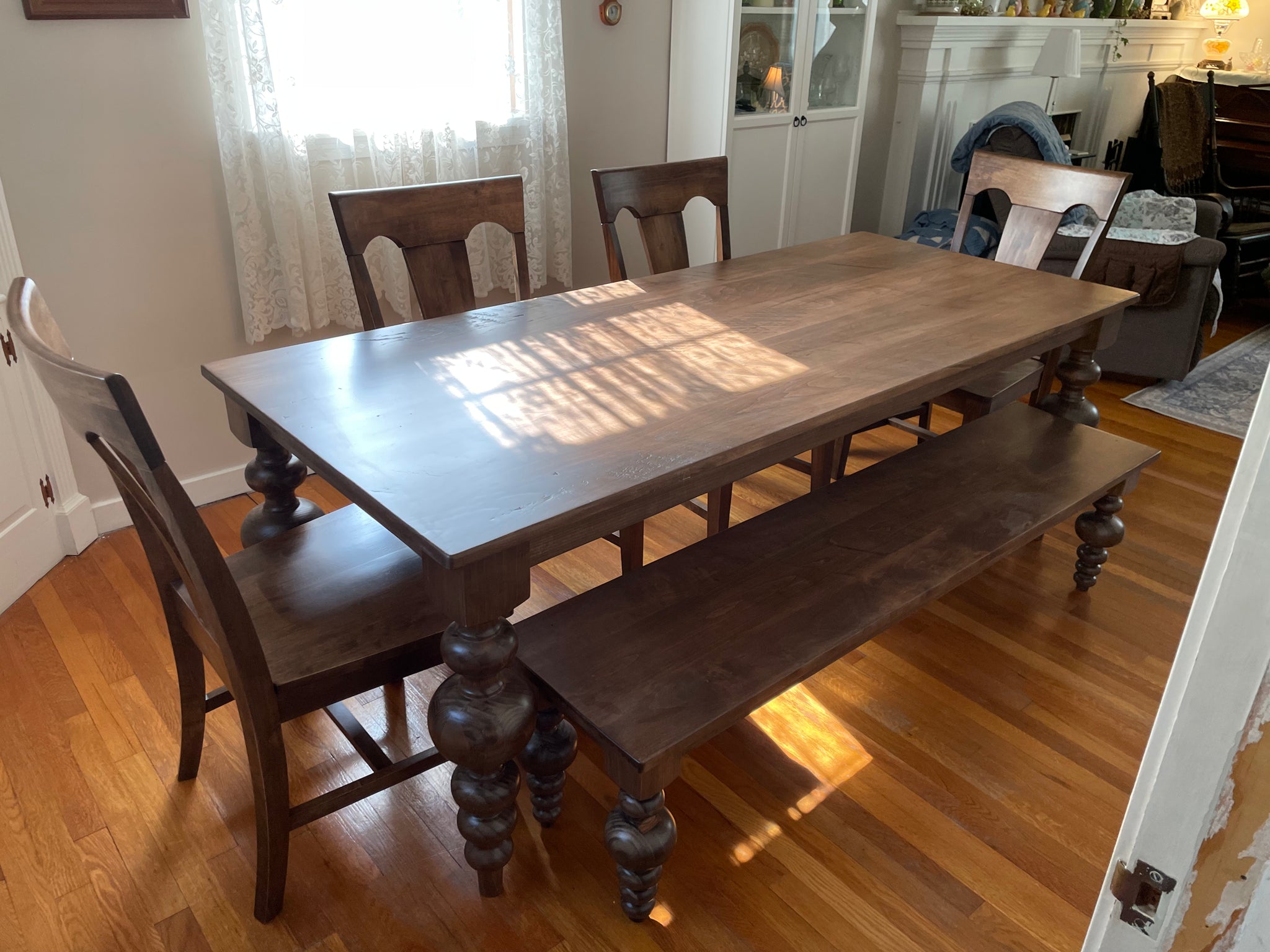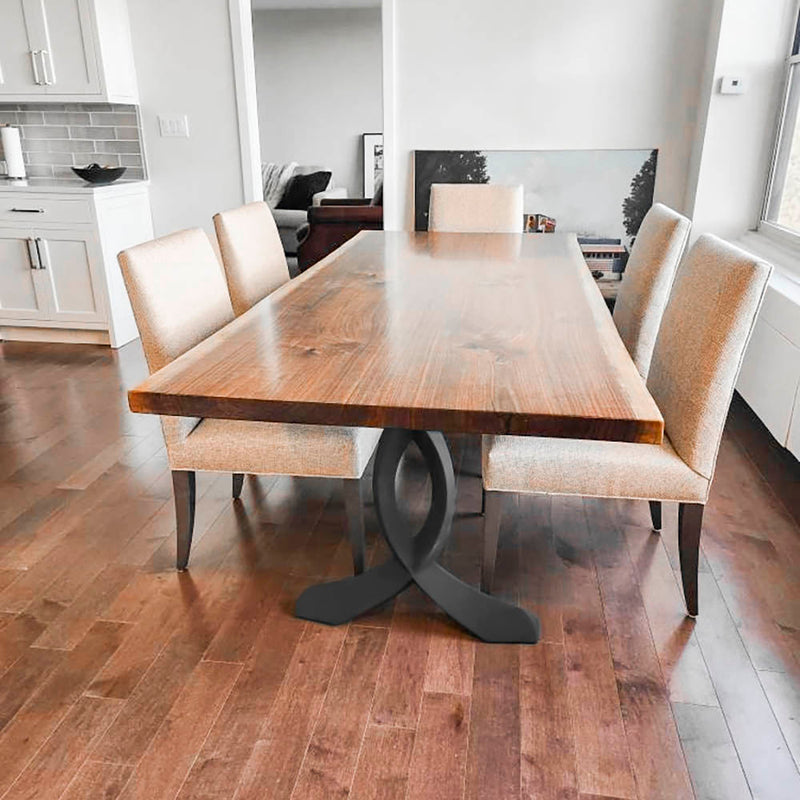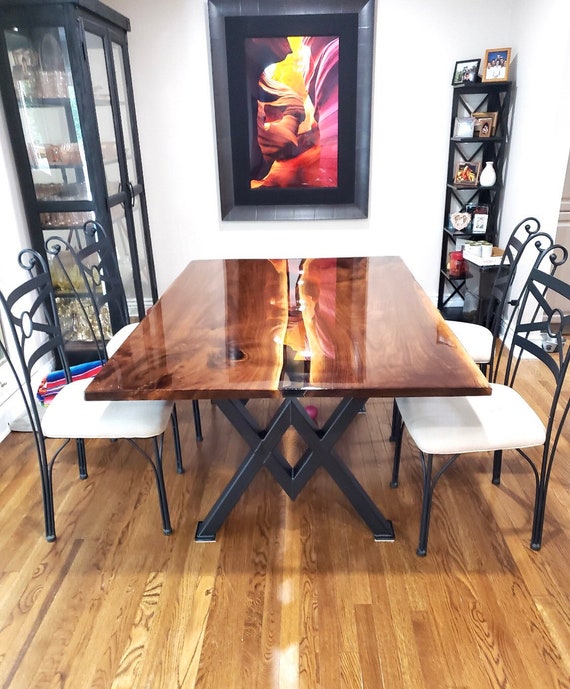Professional Tips for Setting Up Dining-room Table Legs for Optimum Security
When it involves setting up dining room table legs, attaining maximum stability is vital for both performance and appearances. The procedure begins with picking the ideal materials and equipment, complied with by precise alignment and consideration of weight distribution. Each step plays a critical function in making sure that the ended up product holds up against everyday use without compromising security or design stability. Recognizing the subtleties of these components can significantly affect the total end result. What specific methods can enhance stability even further?
Pick the Right Legs
When selecting the proper legs for your dining area table, it is vital to consider both performance and looks. The legs you pick will dramatically influence the overall layout and security of the table. Examine the table's meant use; if you expect regular events, sturdier legs, such as those made from solid wood or steel, may be more suitable, as they offer increased toughness and support.
Following, take into consideration the height and style of the legs in connection to the tabletop. Conventional table typically vary from 28 to 30 inches in height, so ensure the legs align with this standard for convenience. The style of the legs should complement the design of the table top-- whether it be contemporary, rustic, or conventional. For example, tapered legs can add a modern touch, while turned legs could communicate an extra traditional aesthetic.

Select Appropriate Hardware
Exactly how can the ideal hardware improve the security and longevity of your dining-room table? The choice of proper equipment is important to ensuring that the legs of your table are safely affixed and able to withstand routine usage. High-grade screws, bolts, and braces offer the essential stamina to sustain the weight of the table, in addition to any kind of extra lots positioned upon it throughout meals or gatherings.
When selecting screws, select those made from sturdy materials such as stainless steel or brass, which stand up to corrosion and maintain honesty over time. The length of the screws is equally essential; they must permeate deeply right into the table's framework without endangering honesty. For bolted links, take into consideration using lock washers to protect against loosening due to vibration or motion.
In addition, making use of edge braces can add extra assistance, specifically for larger tables or those with much heavier tops. These braces distribute weight evenly and aid preserve the table's form. Making sure that the hardware you pick is ideal for the details materials of your table will certainly additionally boost its general stability and long life, allowing you to enjoy your dining experience for many years to find.
Ensure Correct Placement
Proper placement of dining area table legs is important for both visual appeal and practical security. To achieve ideal alignment, begin by determining the distance from the table's corners to the leg accessory factors.
Utilize a level throughout installation to verify that each leg is perpendicular to the tabletop. This step is essential, as also small inconsistencies can rise into substantial stability problems over time. It is browse around these guys recommended to note the wanted leg placements on the underside of the table with a pencil or covering up tape prior to protecting them. This method functions as a visual guide, permitting changes as needed.
Furthermore, ascertain the placement after the preliminary screws are tightened, as changes might be required prior to completely safeguarding the equipment. By focusing on proper placement, you not just enhance the table's general layout however likewise make sure that it remains practical and stable for years ahead.

Think About Weight Distribution
After guaranteeing correct placement right here of the dining space table legs, it is essential to take into consideration weight distribution to enhance security and capability. dining room table legs. Appropriate weight distribution is important in avoiding ensuring and tottering that the table can sustain its designated load without risk of tipping or collapsing
When positioning the legs, guarantee they are positioned at equal ranges from the center of the table to evenly distribute the weight across the structure. Consider the weight of the tabletop and any things that will frequently hinge on it, such as attractive pieces or tabletop appliances. Tables with heavier surfaces ought to preferably have legs positioned closer to the corners, as this takes full advantage of the base of assistance and minimizes the threat of instability.
Additionally, if the table is planned for use in a high-traffic area, consider using much heavier products for the legs or adding maintaining aspects, such as cross-bracing or a lower rack - dining room table legs. These changes can aid keep balance and stop shifting during usage. Eventually, a well-considered weight circulation method will significantly improve the table's overall performance, ensuring it stays a practical and eye-catching centerpiece for your eating space
Test Stability Before Usage
Testing the stability of the eating area table prior to usage is a vital step that ought to not be neglected. If the table reveals instability, identify the legs or joints that might need modification.
Next, examine that all fasteners and screws are tightened correctly. Loose links can bring about instability and possible damage with like it time. If essential, utilize wood adhesive on joints to boost security, guaranteeing to allow ample drying out time.

Final Thought
In verdict, the setup of eating area table legs requires careful consideration of materials, positioning, weight, and equipment distribution to attain maximum security. By selecting high-grade fasteners and durable legs, ensuring accurate positioning, and dispersing weight equally, the structural integrity of the table can be dramatically enhanced. Carrying out a security examination before regular use additionally makes certain that the table will endure daily pressures, consequently giving a dependable and risk-free eating experience.
When it comes to mounting eating area table legs, attaining optimum security is extremely important for both functionality and looks. The legs you pick will dramatically impact the overall design and security of the table (dining room table legs). Standard eating tables typically vary from 28 to 30 inches in elevation, so make certain the legs straighten with this criterion for comfort.Appropriate alignment of dining area table legs is necessary for both aesthetic charm and functional security.In conclusion, the setup of eating space table legs needs cautious consideration of products, weight, alignment, and equipment distribution to achieve maximum security